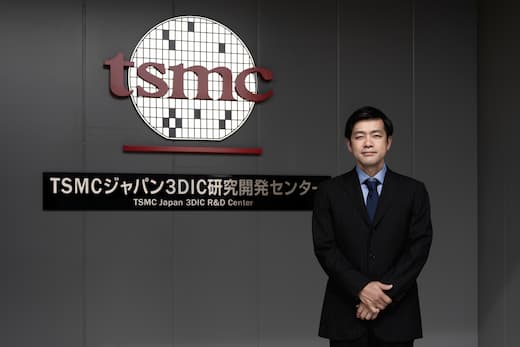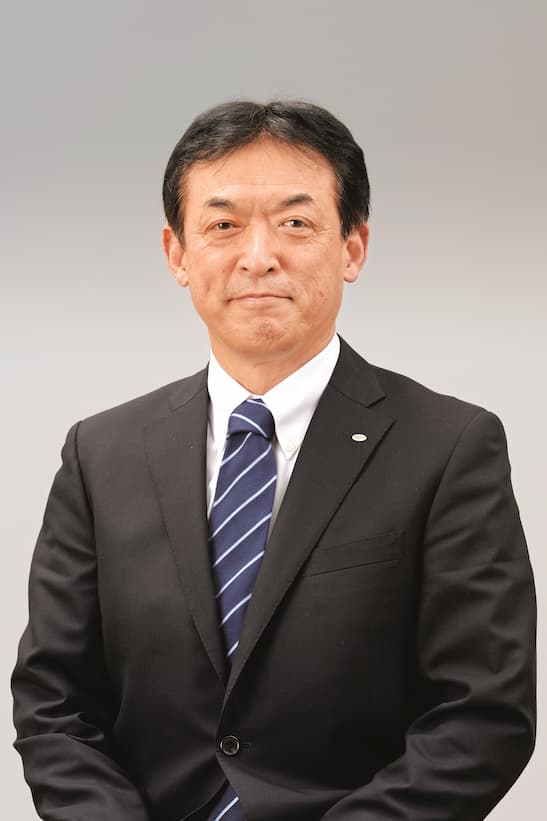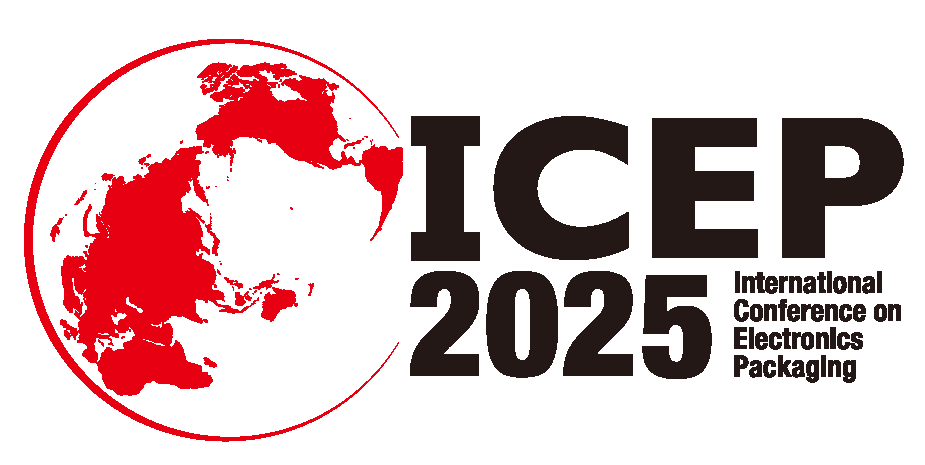
IAAC Special Session
Greeting
 Beth Keser
Beth KeserZero ASIC,IMAPS Past President
3D Chiplet Technologies for Automotive/AI Applications
 Japan's strategy for Semiconductors
Japan's strategy for SemiconductorsHisashi Kanazashi
Ministry of Economy, Trade and Industry
 Latest Status of on-Substrate Material Development for CoWoS Packaging
Latest Status of on-Substrate Material Development for CoWoS PackagingShimpei Yamaguchi
tsmc Japan 3DIC R&D Center
Abstract:
Recent significant booming in high performance computing (HPC), represented by generative AI, is leading semiconductor market growth. The HPC/AI technology is enabled by so-called advanced packaging technologies such as 2.5D interposer and 3D chip stacking for system level integration, together with advanced silicon technology where traditional scaling is being pursued.
Regarding the advanced packaging, TSMC offers technology suites called “3DFabric” to support wide range of customer demands. 3DFabric includes CoWoS (Chip-on-Wafer-on-Substrate) and InFO (Integrated Fan-Out) which are based on back-end packaging technology, and SoIC (System-on-Integrated-Chip) based on front-end silicon technology. Amongst them, CoWoS is widely being adopted by numerous HPC/AI products as a platform technology for the system level integration. Thus, continuous innovations in CoWoS process and material and their seamless implementation in high volume manufacturing (HVM) are indispensable to realize unremitting evolution of HPC/AI technologies in the future.
TSMC Japan 3DIC R&D Center is established in 2021 to drive future process and material pathfinding for advanced packaging together with ecosystem partners in Japan. In this talk, we will describe the latest progress of this collaborative research focusing on on-Substrate materials, and future outlook of the technologies will be also discussed.
 Advanced Packaging Technologies in Memory Applications for AI Era
Advanced Packaging Technologies in Memory Applications for AI EraKi Ill Moon
SK Hynix
Abstract:
In the rapidly evolving field of artificial intelligence (AI), semiconductor packaging (PKG) technology plays a critical role in meeting the high-performance and efficiency demands of AI systems. As AI applications continue to proliferate across various industries, there is a pressing need for advanced PKG solutions that can accommodate increased computational power, higher data transfer rates, and greater energy efficiency. This discussion will review the development trends in PKG technology, identify core future technologies, and explore specific trends related to high-bandwidth memory (HBM) and heterogeneous chip integration, with a focus on SK hynix's strategic directions.
 Enabling Power Efficient AI with Advanced Packaging
Enabling Power Efficient AI with Advanced PackagingHajime Saiki
AMD
Abstract:
Chiplet are fundamental to the continued economic growth. New heterogeneous architectures like 2.5D&3D driving AMD’s leading advanced roadmap, will be discussed. And focus on how advanced 3D packaging is enabling industry’s best AI architectures.
 Chiplets and Advanced Packaging for AI Applications: Costs and Risks
Chiplets and Advanced Packaging for AI Applications: Costs and RisksAmy Lujan
SavanSys Solutions
Abstract:
AI and other high-performance applications are demanding more from advanced semiconductor packaging. Lower latency, higher bandwidth, and higher density interconnect are all required to support AI.
One way to meet these requirements is with chiplets. Chiplets avoid the reticle and yield limitations that affect traditional monolithic SoCs while also enabling faster signal throughput with less power. Two packaging technologies that support chiplets are interposer-based processes (2.5D) and 3D stacking. Both technologies are complex with many moving parts: chiplets must be obtained, possibly from multiple sources, and they must be stacked and/or placed on an interposer, which itself involves expensive processing to create. The resulting stack must be placed on a substrate, which may be large and complex to meet product requirements.
This talk will present cost breakdowns for 2.5D and 3D advanced packaging technologies. Understanding the cost for each process—starting with the cost of the silicon chiplets and including all manufacturing required to end with a complete package—is imperative. When the cost-prohibitive portions of a technology are identified, the industry is able to focus on solutions and more quickly enable successful AI and high-performance chips.
 Developments in Advanced SoC Research for Automotive
Developments in Advanced SoC Research for AutomotiveNobuaki Kawahara
ASRA
Abstract:
With the progress of CASE, the intellectualization, computerization, and electrification of automobiles have greatly advanced, and the software and electronic systems installed in them have become large in scale. High-performance digital semiconductors, SoCs are important for controlling these systems in an integrated manner. Because there are variations and circuit scales difference in Japanese cars, the current problem is that SoCs from different vendors are used, the same software cannot be used, software changes must be made to match the hardware, and development costs are enormous. ASRA, Advanced Soc Research for Automotive, aims to create a SoC hardware platform and ecosystem that realize SDV by providing the same software environment from compact cars to luxury cars using chiplet technology. Chiplet SoCs have begun to be put into practical use in data centers, etc., but in automobiles, there are unique technical issues such as functional safety, heat, noise, and vibration. There is no connection technology or packaging technology for automotive chiplets, and new technological development is required. In addition to member companies, ASRA will develop these technologies in cooperation with industry, academia, and government. This project, supported by the Ministry of Economy, Trade and Industry and NEDO, is scheduled to start in 2024, with the chiplet technologies established by 2028 and installed in 2030 vehicles.
 Chiplets and Advanced Packaging for Automotive: Motivation and Opportunities
Chiplets and Advanced Packaging for Automotive: Motivation and OpportunitiesVikas Gupta
ASE US
Abstract:
Software Defined Vehicles enabled by electric/electronic (E/E) and software
architecture will play a vital role in automotive and semiconductor value chain.
Automotive E/E architectures have evolved from decentralized approach to Zonal
Controllers and Central Compute Units which drive Silicon consolidation and
integration. Emerging designs bring together CPUs, memory and hardware
accelerators based on advanced Silicon nodes. With the adoption of advanced
semiconductor nodes, the automotive industry is facing challenges on how to maintain
overall costs. While chiplet adoption is expanding in many applications ranging from
high performance computing to consumer electronics, automotive electronics is a
special case with different constraints and reliability requirements.
The presentation will discuss motivation for utilizing chiplets in automotive
applications and opportunities from product configurability, design flexibility and time
to market. Additionally, update on two fanout package solutions for automotive
applications will be shared - one for multi-SoC/chiplets integration, and another for
SoC-HBM3 integration. Both packages utilize ASE VIPackTM FOCoS (Fanout Chip on
Substrate)-Chip Last technology.
 Chiplets in Automotive Electronics : Opportunities and Challenges
Chiplets in Automotive Electronics : Opportunities and Challenges Andreas Grassmann
Infineon Technologies
Abstract:
The automotive industry is undergoing a transformative shift towards electrification, autonomy, and connectivity, demanding unprecedented levels of computational power, energy efficiency, and scalability. Chiplet-based architectures have the potential to revolutionize this sector by addressing these challenges through modular, cost-effective, and high-performance semiconductor solutions. Unlike traditional monolithic system-on-chips (SoCs), chiplets decompose complex designs into smaller, specialized components that can be independently optimized and integrated. We will discuss the drivers for this change for automotive applications, the technology challenges and the implications on design methodology and supply chain.

